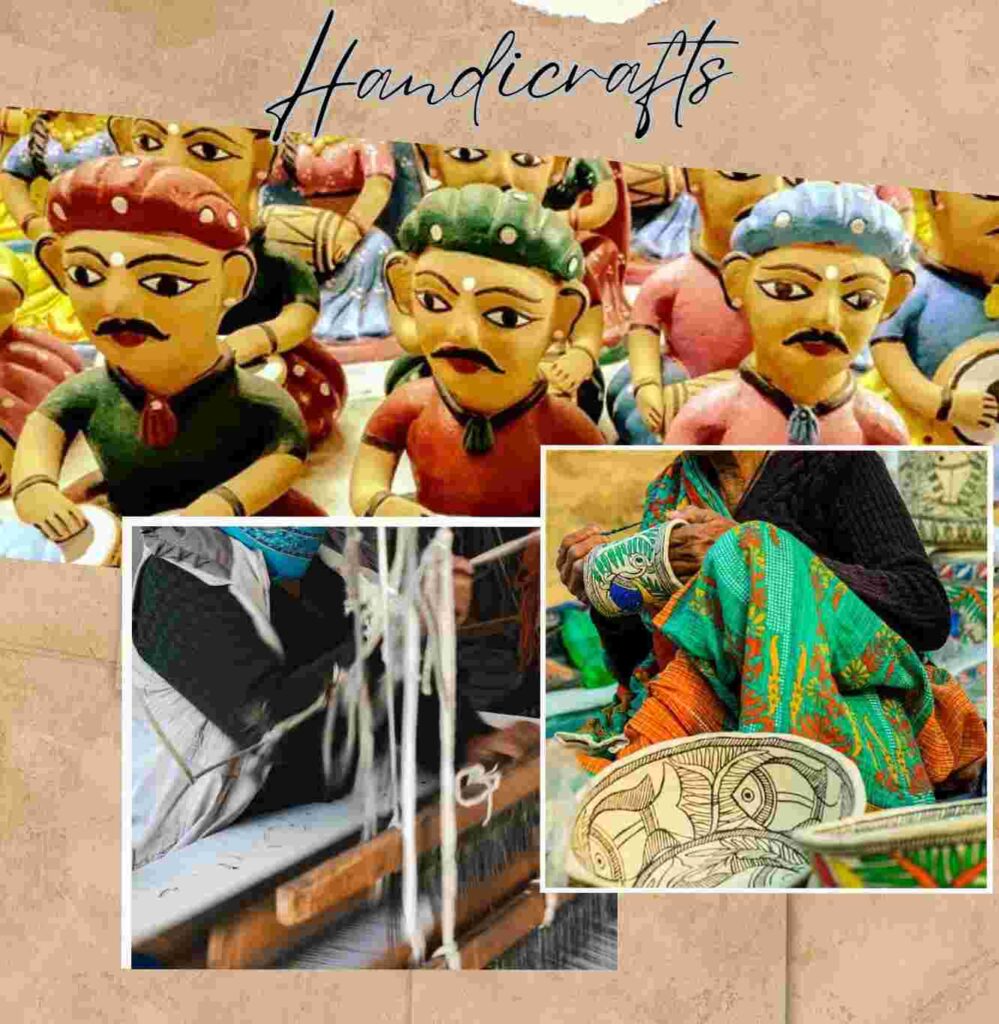
India, a nation steeped in the richness of tradition and the finesse of artistry, has gained international acclaim for its exquisite handicrafts. Each piece is a testament to the country’s cultural heritage and the unmatched skills of its artisans. From intricate carvings and delicate textiles to vibrant paintings and mesmerizing sculptures, Indian handicrafts encapsulate the essence of creativity and craftsmanship that has been passed down through the ages.
A Rich Tapestry of Traditions
Indian handicrafts are deeply entwined with the diverse cultural traditions of the country. Each region has its unique style and techniques, mirroring local customs, beliefs, and available natural resources. In the northern parts, wood carving flourishes, with artisans creating intricate furniture, decorative pieces, and religious sculptures. In the southern regions, metalwork reigns supreme, with skillful hands crafting exquisite jewelry, utensils, and temple adornments. The eastern states are renowned for their textiles, where weavers produce colorful silks, intricate embroideries, and delicate fabrics. In the western regions, pottery takes center stage, with artisans molding clay into utilitarian and decorative objects.
A Legacy of Expertise
Indian handicrafts are not mere decorative items; they are tangible expressions of the country’s deep-rooted craftsmanship. Over centuries, artisans have meticulously honed their skills, passing down their knowledge and techniques from one generation to the next. The intricate patterns and delicate details of Indian handicrafts bear witness to the patience, precision, and artistic vision of these talented individuals.
A Cultural Emblem
Indian handicrafts serve as more than just objects of beauty; they are symbols of cultural identity. Each piece encapsulates the stories, traditions, and beliefs of the creators. The motifs, colors, and designs often carry symbolic meanings, reflecting the cultural context in which they originated. Indian handicrafts bridge the past and the present, preserving the heritage of the country while adapting to contemporary tastes and trends.
Economic and Social Significance
The handicraft industry is a cornerstone of India’s economy, providing employment for millions of artisans, particularly in rural areas. The export of handicrafts generates valuable foreign exchange earnings, contributing to the country’s economic growth. Furthermore, handicrafts play a pivotal role in safeguarding traditional skills, fostering cultural identity, strengthening communities, and promoting social cohesion.
Preserving a Cherished Heritage
Preserving India’s handicraft heritage is of paramount importance. With rapid urbanization and the allure of modern lifestyles, traditional handicrafts face the risk of disappearing. Government initiatives, educational programs, and support for artisan communities are essential to ensure the continued thriving of this invaluable heritage.
A Global Cultural Connection
Indian handicrafts have captivated the world with their beauty, craftsmanship, and cultural significance. They grace museums and private collections worldwide, serving as ambassadors of Indian art and culture. These exquisite creations transcend borders, fostering understanding and appreciation of India’s rich heritage.
Indian handicrafts are a treasury of artistry, craftsmanship, and cultural heritage. They embody the spirit of creativity, the legacy of skills, and the enduring traditions of India. As the world continues to marvel at the beauty and significance of Indian handicrafts, it is our responsibility to preserve this precious legacy for generations to come.




